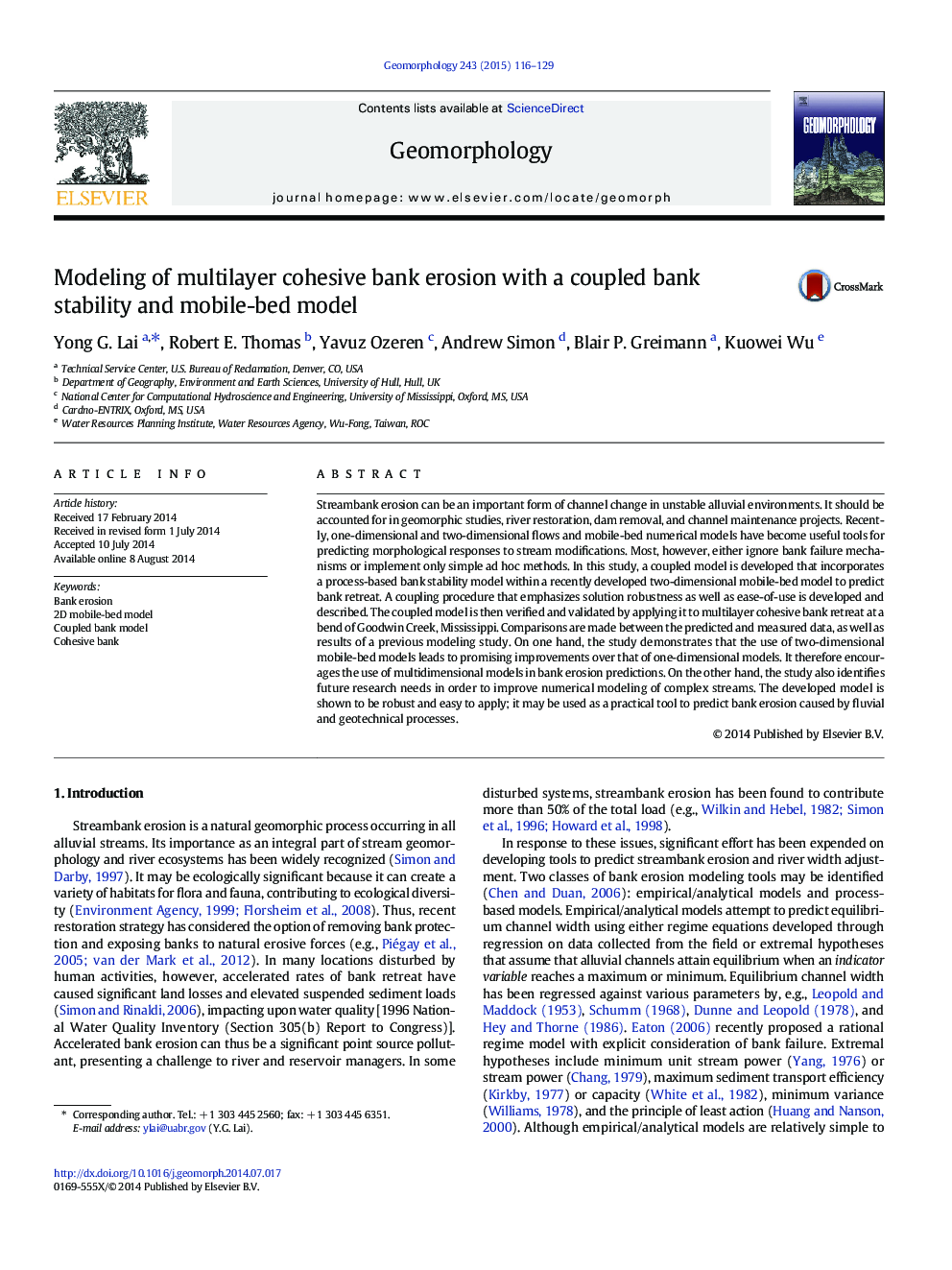| Article ID | Journal | Published Year | Pages | File Type |
|---|---|---|---|---|
| 4684203 | Geomorphology | 2015 | 14 Pages |
Streambank erosion can be an important form of channel change in unstable alluvial environments. It should be accounted for in geomorphic studies, river restoration, dam removal, and channel maintenance projects. Recently, one-dimensional and two-dimensional flows and mobile-bed numerical models have become useful tools for predicting morphological responses to stream modifications. Most, however, either ignore bank failure mechanisms or implement only simple ad hoc methods. In this study, a coupled model is developed that incorporates a process-based bank stability model within a recently developed two-dimensional mobile-bed model to predict bank retreat. A coupling procedure that emphasizes solution robustness as well as ease-of-use is developed and described. The coupled model is then verified and validated by applying it to multilayer cohesive bank retreat at a bend of Goodwin Creek, Mississippi. Comparisons are made between the predicted and measured data, as well as results of a previous modeling study. On one hand, the study demonstrates that the use of two-dimensional mobile-bed models leads to promising improvements over that of one-dimensional models. It therefore encourages the use of multidimensional models in bank erosion predictions. On the other hand, the study also identifies future research needs in order to improve numerical modeling of complex streams. The developed model is shown to be robust and easy to apply; it may be used as a practical tool to predict bank erosion caused by fluvial and geotechnical processes.
